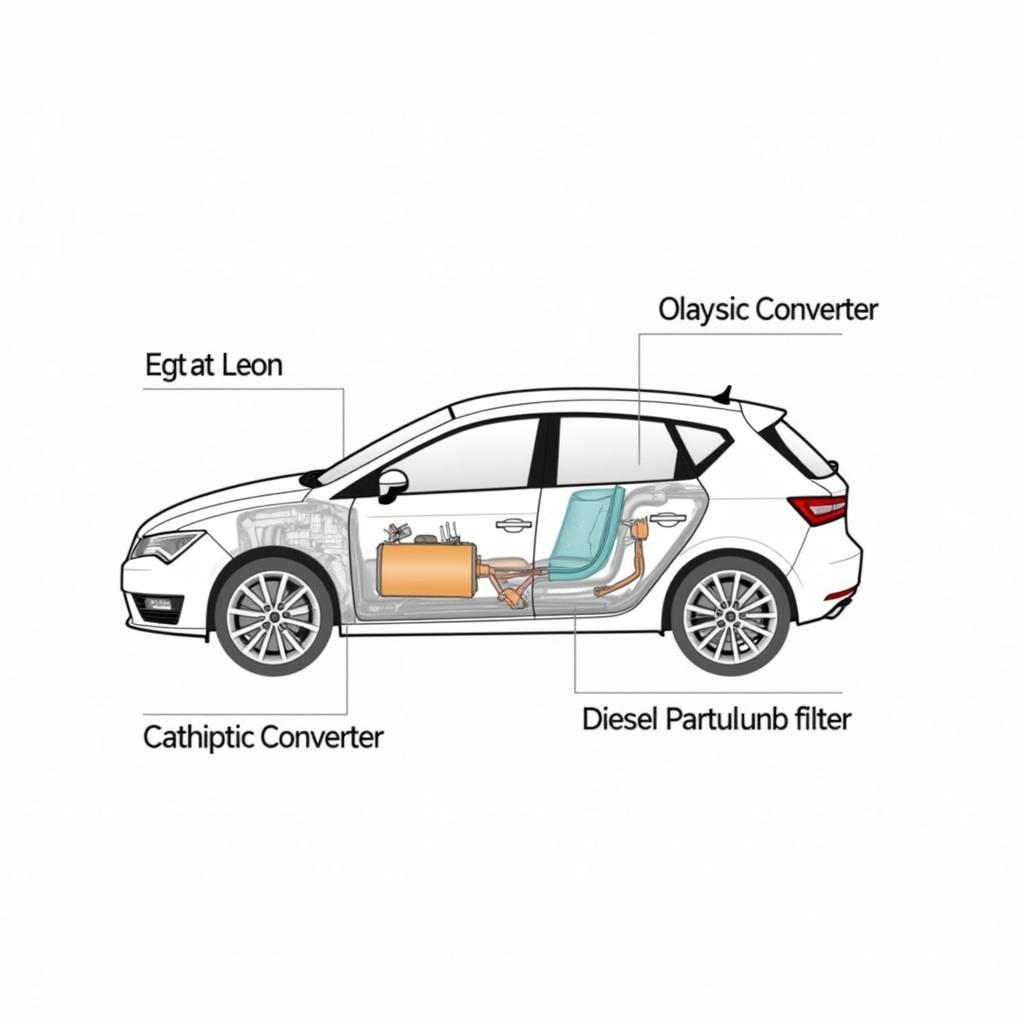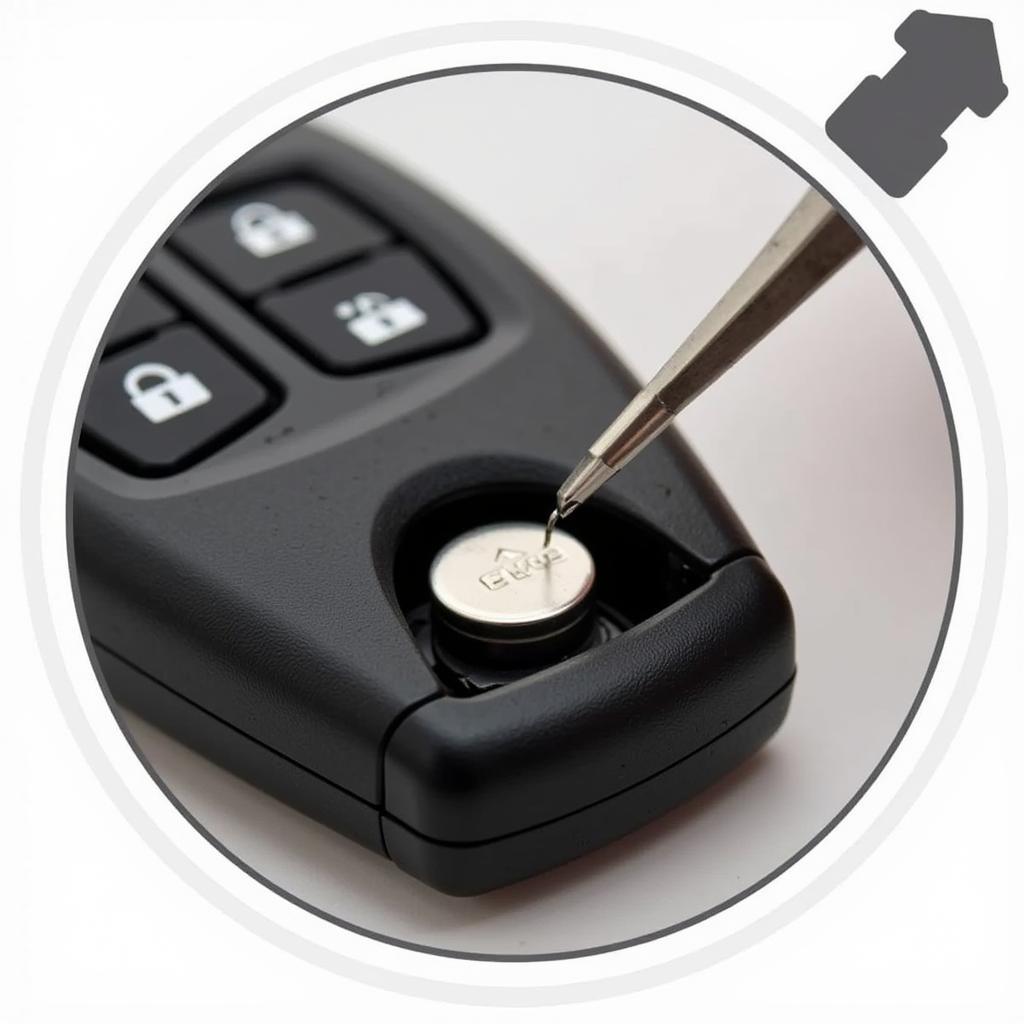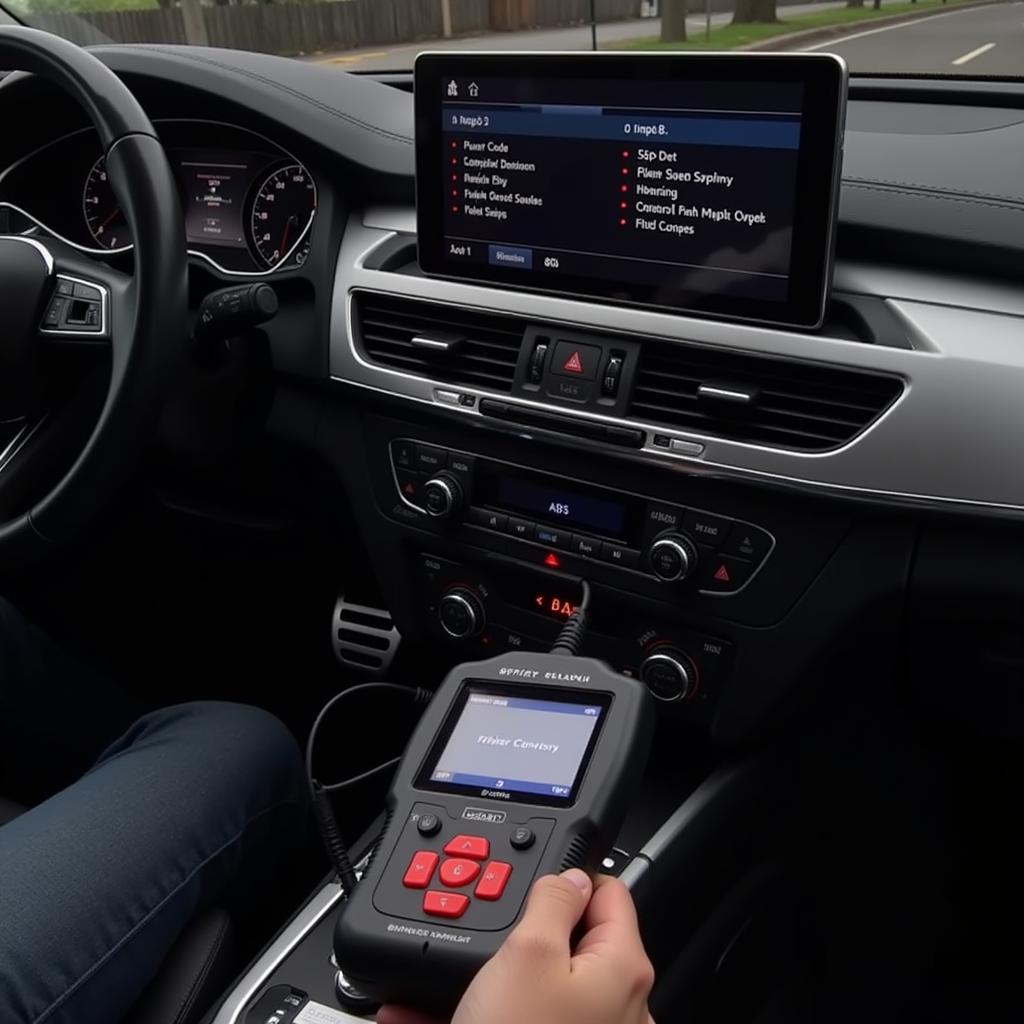The dreaded emissions warning light on your Seat Leon can be a cause for concern. This amber-colored light, often resembling an engine outline with an exclamation point, indicates a problem within your car’s emissions system. While it’s not necessarily an immediate emergency, ignoring it can lead to decreased fuel efficiency, increased emissions, and potential damage to your car. This guide will walk you through understanding, diagnosing, and addressing the Seat Leon emissions warning light.
Understanding Your Car’s Emissions System
Modern vehicles like the Seat Leon utilize sophisticated emissions control systems to minimize their environmental impact. These systems work to reduce harmful pollutants released into the atmosphere, such as nitrogen oxides, carbon monoxide, and unburned hydrocarbons. Key components often include:
- Catalytic Converter: Converts harmful gases into less harmful substances.
- Oxygen Sensors: Monitor exhaust gases to regulate the air-fuel mixture.
- Diesel Particulate Filter (DPF): Traps soot particles in diesel engines.
- Evaporative Emissions System: Prevents fuel vapors from escaping the fuel tank.
A malfunction in any of these components can trigger the emissions warning light.
 Seat Leon Emissions System Components
Seat Leon Emissions System Components
Common Causes of the Emissions Warning Light
Several issues can activate the emissions warning light in your Seat Leon. Some of the most prevalent causes include:
- Faulty Oxygen Sensor: A malfunctioning oxygen sensor can disrupt the air-fuel mixture, leading to increased emissions.
- Catalytic Converter Issues: A clogged or failing catalytic converter can’t efficiently convert harmful gases, triggering the warning light.
- Loose or Damaged Gas Cap: A loose gas cap can allow fuel vapors to escape, impacting the evaporative emissions system.
- Spark Plug Problems: Worn or faulty spark plugs can cause misfires, leading to increased emissions.
- DPF Blockage (Diesel Engines): The DPF can become clogged, particularly in cars used primarily for short journeys.
Diagnosing the Problem
Determining the exact cause of the emissions warning light often requires specialized diagnostic equipment. While some issues, like a loose gas cap, can be visually inspected, others require a deeper dive:
- Check Engine Light: Is the check engine light illuminated alongside the emissions warning light? A simultaneous appearance often signals a more serious issue requiring immediate attention.
- Recent Repairs: Have you had any recent work done on your car’s engine or exhaust system? Improper installation or faulty parts can trigger warning lights.
- Driving Habits: Do you frequently drive short distances? This can lead to DPF blockages in diesel engines.
What to Do When the Light Comes On
If your Seat Leon’s emissions warning light illuminates, take the following steps:
- Don’t Panic: The light itself doesn’t necessarily indicate a critical failure.
- Check Your Gas Cap: Ensure it’s securely tightened.
- Monitor Your Driving: Avoid harsh acceleration or heavy loads if possible.
- Seek Professional Help: If the light persists or you notice performance issues, contact a qualified mechanic specializing in Seat vehicles.
Remote Diagnostics and Repair: A Modern Solution
In today’s tech-driven world, remote diagnostics and software solutions are revolutionizing car repair. By connecting your Seat Leon to a specialized device, expert technicians can remotely:
- Read Fault Codes: Quickly pinpoint the root cause of the emissions warning light.
- Analyze System Data: Gain in-depth insights into your car’s emissions system performance.
- Perform Software Updates: Resolve software-related issues that may be triggering the warning light.
“Remote diagnostics save time and hassle,” says John Miller, Senior Automotive Diagnostician at CARDIAGTECH. “We can often identify and rectify problems without the car ever leaving the owner’s driveway.”
Preventing Future Emissions Problems
Proactive maintenance can significantly reduce the risk of future emissions system issues:
- Regular Servicing: Follow your Seat Leon’s recommended service schedule diligently.
- Quality Fuel and Oil: Use high-quality fuel and engine oil suitable for your car model.
- Address Warning Lights Promptly: Never ignore warning lights, even if they appear intermittent.
Conclusion
The emissions warning light on your Seat Leon shouldn’t be ignored. While it can sometimes be a minor issue, prompt diagnosis and repair are essential. Utilizing modern remote diagnostics can streamline the process and get you back on the road with a cleaner, more efficient vehicle. Remember, proactive maintenance is key to preventing future emissions problems and ensuring the longevity of your Seat Leon.
FAQs
1. Can I still drive my Seat Leon with the emissions warning light on?
While you might be able to drive for a short period, it’s crucial to have the issue diagnosed and addressed promptly to prevent potential damage and increased emissions.
2. How much does it cost to fix an emissions system problem?
Repair costs vary widely depending on the specific issue. A loose gas cap is a simple fix, while a catalytic converter replacement can be expensive.
3. Can remote diagnostics fix all emissions problems?
While incredibly effective for diagnosis and software-related issues, remote diagnostics might not be suitable for all mechanical repairs.
4. How often should I have my Seat Leon’s emissions system checked?
Following your car’s recommended service intervals is best. However, if you notice any unusual symptoms or warning lights, consult a mechanic immediately.
5. Is it worth fixing an older Seat Leon with emissions problems?
The cost-effectiveness of repair depends on the car’s overall condition and the severity of the emissions issue. A trusted mechanic can provide guidance.


